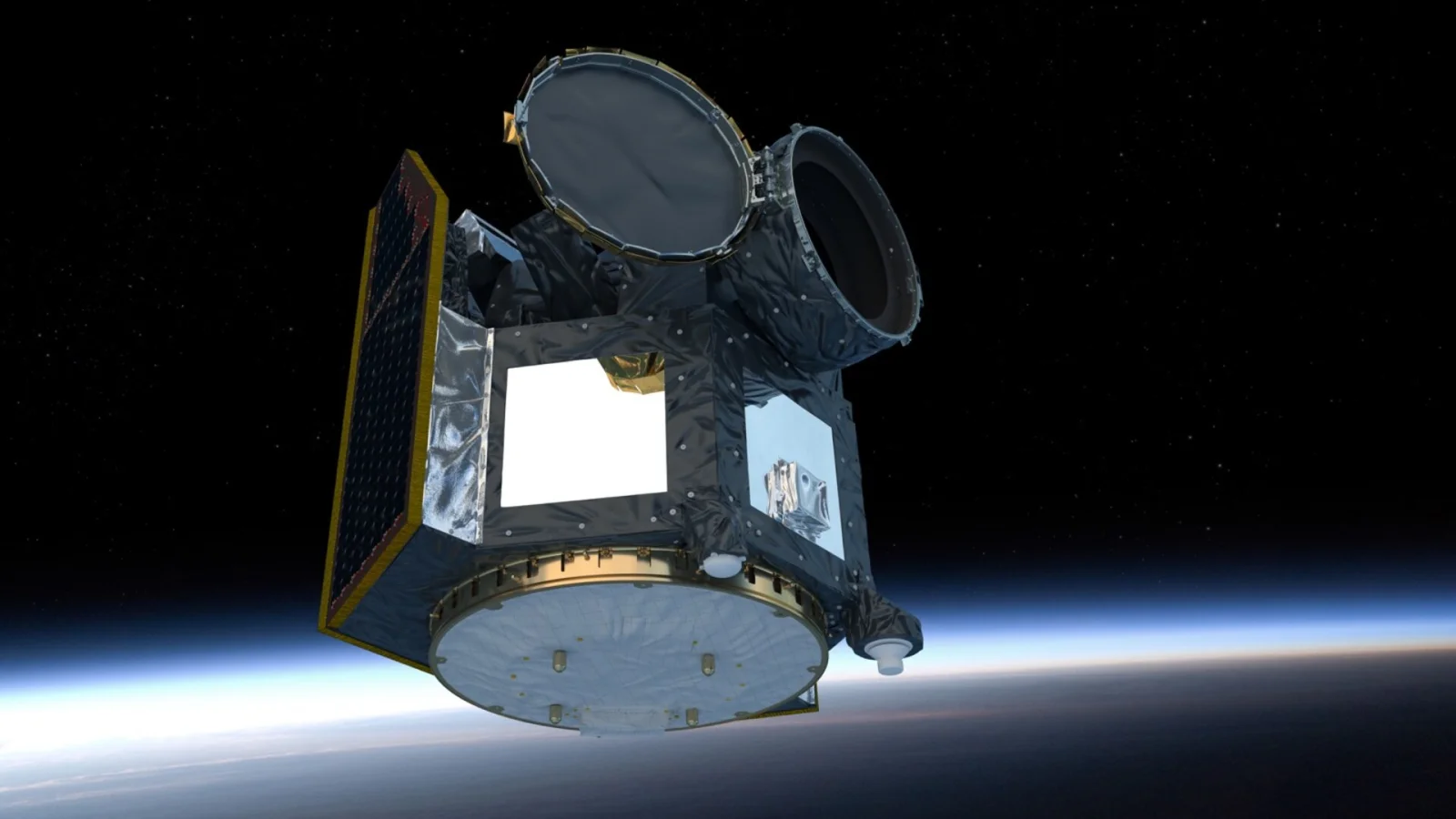CHEOPS

Analysing exoplanetary transits from high-precision photometry (ESA)

Launched in December 2019, CHEOPS (CHaracterizing ExOPlanet Satellite) is the European Space Agency's (ESA) first mission dedicated to searching for planet transit using ultra-high-precision photometry on bright stars already known to harbour planets. The mission is designed to observe a large sample of exoplanets in transit, and to measure with unprecedented precision the tiny footprints of planets during transit and eclipse events.
The mission's goal is to identify planets with significant atmospheres within a certain range of masses, host star distances, and stellar parameters by characterising the transit of exoplanets orbiting bright host stars. CHEOPS is able to determine with unprecedented accuracy the radii of a subset of these planets, with masses between a super-Earth and Neptune already calculated by spectroscopic studies from Earth.
CHEOPS will also provide precise radii for new planets discovered by the next generation of transit surveys from Earth or space (with sizes between a super-Earth and Neptune). By focusing on stars located anywhere in the sky with sufficient brightness to allow precise tracking of their radial velocity, CHEOPS will provide an unprecedented sample of small planets with correctly measured radii, which will facilitate the calculation of their apparent densities, thus allowing theories of planetary formation and evolution to be tested.
THE IEEC CONTRIBUTION
The IEEC is involved in the scientific preparation and operation of the mission, through participation in the scientific team and in the mission council. Researchers from the group specialising in exoplanets and stellar physics have contributed to the study of the candidate planets to be observed by CHEOPS, and will participate in the analysis of some of the data obtained. In addition, the IEEC communication team has actively participated, in coordination with the European Space Agency (ESA), in outreach activities aimed at disseminating the mission relevance to the general public.
